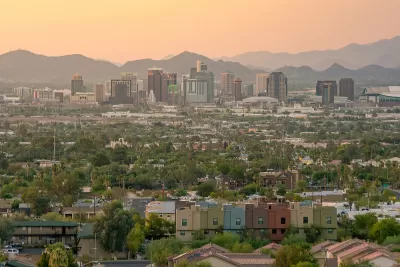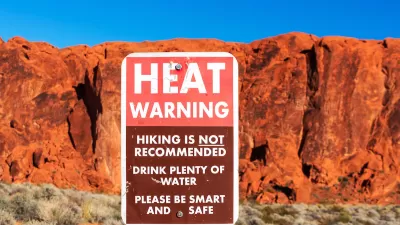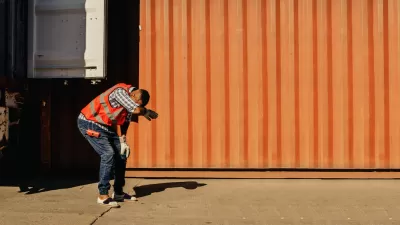Without a standard for recording and classifying heat-related deaths, experts believe the scale of the problem is much bigger than numbers let on.

As this summer's heat waves showed, extreme weather can take a deadly–and costly–toll on communities and infrastructure not prepared to handle rising temperatures. As Chloe Jones and Cresencio Rodriguez-Delgado write, "[h]eat-related deaths are a growing concern for anyone exposed to the elements for long periods of time, or whose health conditions or age make them particularly at-risk in extreme weather conditions, as climate change intensifies temperatures." However, "[t]here isn’t a standard in how to record, count or classify" heat deaths, making it difficult to understand the scope of the problem.
"Deaths from the heat are not always reported as such and experts say many are undercounted or misclassified." Medically, "[t]he only way to accurately know whether someone died of heat or if their death was related to heat is if their body temperature is taken right before or immediately after their death." For people like farm workers, who are twenty times more likely to die from heat stress than other occupations, "[i]t is nearly impossible to understand the gravity and impact heat has on deaths, especially for people who work outdoors, without accurate data."
"If the scale of the problem isn’t known, it is difficult to roll out effective mitigation measures. Accurate data would potentially be able to push states and local jurisdictions toward addressing heat-related deaths more head-on, especially as temperatures continue to rise with climate change."
FULL STORY: We don’t know exactly how many people are dying from heat — here’s why

Study: Maui’s Plan to Convert Vacation Rentals to Long-Term Housing Could Cause Nearly $1 Billion Economic Loss
The plan would reduce visitor accommodation by 25,% resulting in 1,900 jobs lost.

North Texas Transit Leaders Tout Benefits of TOD for Growing Region
At a summit focused on transit-oriented development, policymakers discussed how North Texas’ expanded light rail system can serve as a tool for economic growth.

Why Should We Subsidize Public Transportation?
Many public transit agencies face financial stress due to rising costs, declining fare revenue, and declining subsidies. Transit advocates must provide a strong business case for increasing public transit funding.

How to Make US Trains Faster
Changes to boarding platforms and a switch to electric trains could improve U.S. passenger rail service without the added cost of high-speed rail.

Columbia’s Revitalized ‘Loop’ Is a Hub for Local Entrepreneurs
A focus on small businesses is helping a commercial corridor in Columbia, Missouri thrive.

Invasive Insect Threatens Minnesota’s Ash Forests
The Emerald Ash Borer is a rapidly spreading invasive pest threatening Minnesota’s ash trees, and homeowners are encouraged to plant diverse replacement species, avoid moving ash firewood, and monitor for signs of infestation.
Urban Design for Planners 1: Software Tools
This six-course series explores essential urban design concepts using open source software and equips planners with the tools they need to participate fully in the urban design process.
Planning for Universal Design
Learn the tools for implementing Universal Design in planning regulations.
Ascent Environmental
Borough of Carlisle
Institute for Housing and Urban Development Studies (IHS)
City of Grandview
Harvard GSD Executive Education
Toledo-Lucas County Plan Commissions
Salt Lake City
NYU Wagner Graduate School of Public Service





























